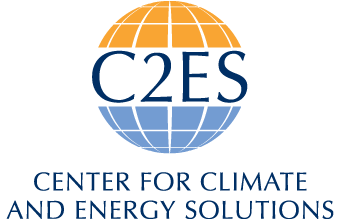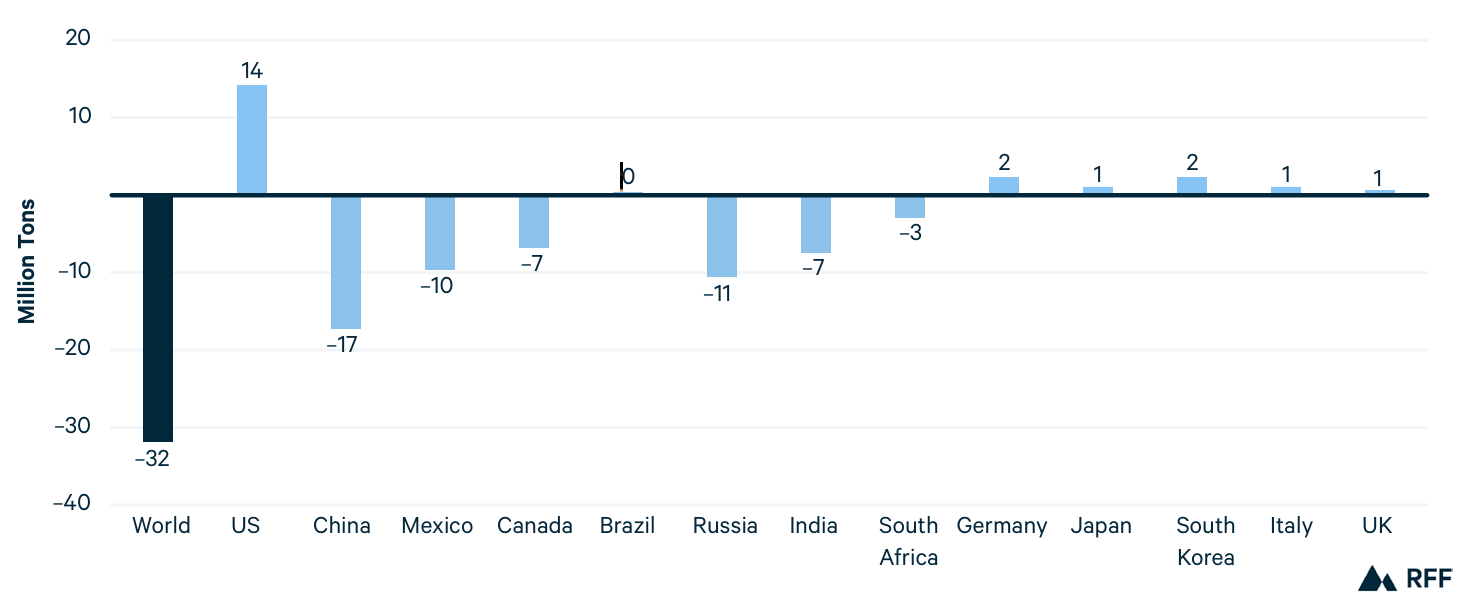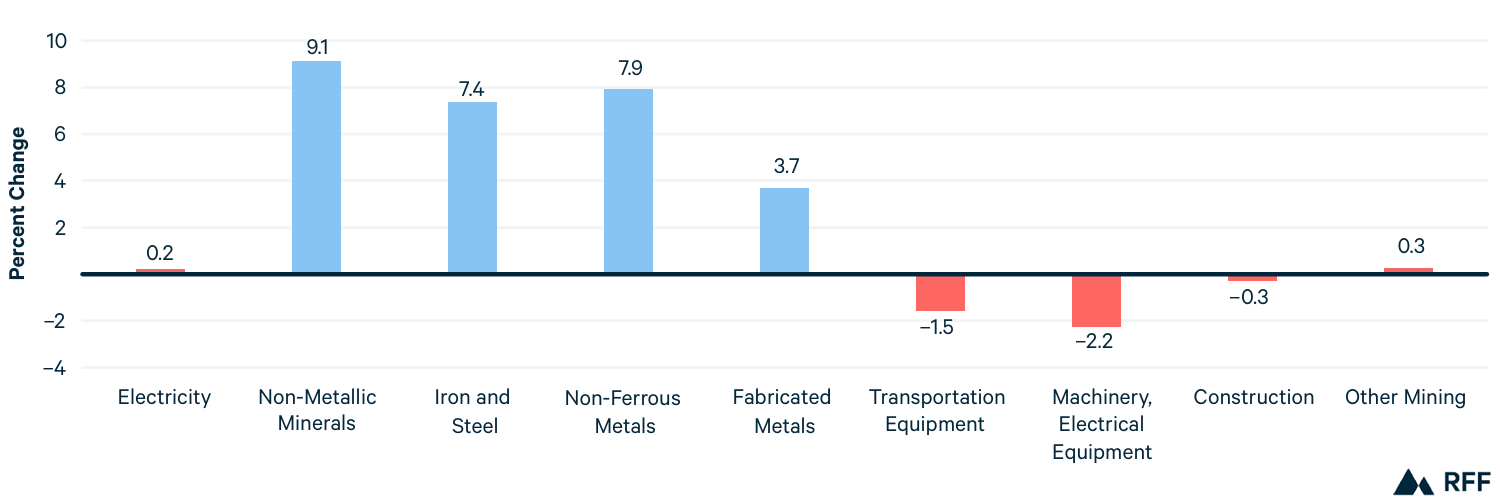While Washington is focused on budget reconciliation and the fate of energy and manufacturing tax credits and how to strengthen U.S. global competitiveness in industry and manufacturing, there remain other opportunities to advance those priorities with climate-smart policies. Linking climate and trade policy offers an opportunity to increase American economic competitiveness while reducing greenhouse gas emissions. In recent years, climate and trade policies have garnered interest from both Democrats and Republicans. In April 2025, Senators Bill Cassidy (R-La.) and Lindsey Graham (R-S.C.) introduced the Foreign Pollution Fee Act of 2025 (FPFA, S. 1325 of the 119th Congress), an update to their 2023 proposal of the same name.
The proposed legislation would impose an ad valorem tariff—a tariff calculated as a percentage of the imported good’s value—on imports of iron, steel, aluminum, cement, glass, hydrogen, solar products, and battery inputs. The tariff is based on the difference in emissions intensity associated with producing a good in a country relative to producing in the United States. The tariff rate increases across three tiers of emissions intensity, reaching an ad valorem rate ceiling of 200 percent. While extant border carbon adjustments are paired with domestic emissions control mechanisms, the FPFA excludes any provision for a domestic policy to reduce the emissions intensity of U.S. producers.
A standalone carbon tariff like the FPFA differs from the general concept of a carbon border adjustment mechanism (CBAM) in that it is not linked to a corresponding domestic climate policy, such as a carbon tax or emissions trading system (ETS). For example, the European Union’s (EU) CBAM reflects the EU ETS by requiring importers to purchase and surrender emissions credits equivalent to the emissions embodied in the covered goods they import. The United States has no such carbon pricing policy at the national level.
Advocates for imposing a carbon tariff on imports, like the FPFA, argue that the United States holds a carbon advantage, or the ability to produce energy-intensive, trade exposed goods with lower emissions than foreign producers. There is some evidence to support this claim at the global level, but it is worth noting this is not true for all products or countries. Indeed, many advanced economies produce the goods covered by the FPFA with lower emissions intensity than producers in the United States.
Advocates for a carbon tariff argue the United States should capitalize on its carbon advantage by imposing tariffs on products from countries whose industries’ emissions intensity exceeds that of the United States. Senators Cassidy and Graham claim the FPFA’s proposed pollution fee would create a “level-playing field” between the United States and foreign industry, thereby protecting manufacturers in the United States, strengthening domestic industry, and creating high-paying jobs.
Resources for the Future (RFF) recently published an issue brief detailing its modeling of the FPFA’s impacts on the economy and emissions, both domestically and internationally. RFF’s modeling is particularly valuable because it is based on a dynamic approach that accounts for how a policy like the FPFA would shift trade, production, and emissions over time.
RFF’s modeling shows that the FPFA’s carbon tariffs will increase U.S. production of the covered products by raising the cost of imports. Similarly, trade flows will shift from heavily emitting countries like China and India toward those with lower emissions intensities, benefiting entities like the European Union, the United Kingdom, and Japan.
Taken alone, increasing U.S. industrial output and reorienting trade towards partners producing goods with fewer emissions may be laudable. But it is essential that these benefits are not outweighed by the policy’s side-effects. The modeling shows that because the FPFA lacks any incentive for domestic producers to reduce their emissions intensity, increased domestic production of covered goods will result in increased U.S. greenhouse gas emissions. Increased U.S. emissions would largely nullify global reductions attributable to altered trade flows. Compare this to the EU CBAM: One study recently found that the EU CBAM, paired with a domestic carbon pricing policy in the form of the EU ETS, is poised to reverse carbon leakage – the shifting of emissions intensive industry from jurisdictions with strict climate policies to jurisdictions with less stringent climate policies – while also reducing global emissions by 0.54 percent.


